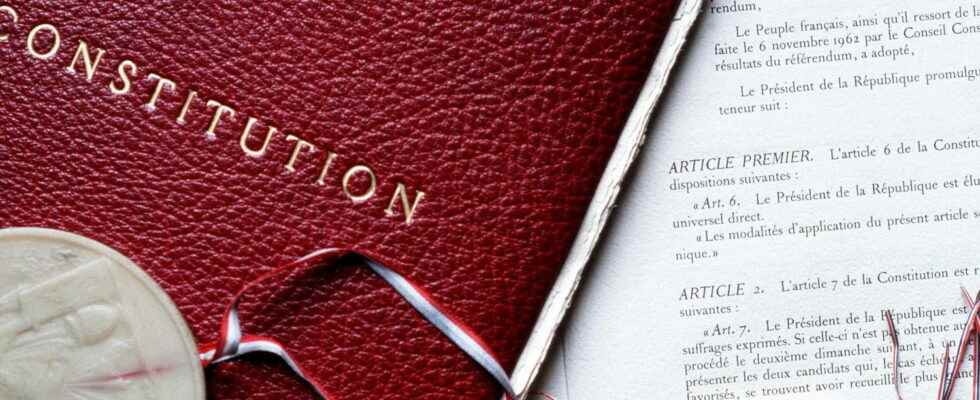The pension reform is presented by Elisabeth Borne this Tuesday, January 10 before being added to the parliamentary debates. The executive has a tool to pass the text despite the opposition of elected officials: article 47.1 of the Constitution.
Prime Minister Elisabeth Borne has ended a long battle in the National Assembly for the adoption of the finance bill. A fight with unequal arms and won after 10 appeals to Article 49.3 of the Constitution. The head of government is going back to the front this Tuesday, January 10 for a text that will be even more difficult to defend: pension reform. This time no 49.3, but the possibility of appealing to article 47.1 of the same founding text. If the terms differ somewhat, theSection 47.1 of the Constitution also allows the forced passage of a bill in Parliament. Still, parliamentarians can more easily circumvent the conditions for the application of the article which is certainly already in the arsenal and the strategic solutions of the executive. What is this parliamentary tool and what does it allow?
What is Section 47.1 of the Constitution?
Article 47.1 of the Constitution is contained in a few lines and relates to the voting of social security financing bills. It imposes deadlines on the two constituent assemblies of Parliament to rule on the text for the first time before proceeding with the amendments to the bill and the traditional round trips between the National Assembly and the Senate: “If the National Assembly does not If the first reading is not pronounced within twenty days after the filing of a bill, the Government seizes the Senate which must decide within fifteen days. “
The particularity which is of great interest in article 47.1 is specified in the rest of the text: “If the Parliament has not decided within a period of fifty days, the provisions of the draft may be implemented by ordinance. ” It must be understood that after fifty days without the opinion of Parliament, the text submitted to the deputies and senators can finally pass into force without the opinion of the elected officials being necessary.
Why can Article 47.1 be used for pension reform?
Pension reform falls well within the scope of Article 47.1 of the Constitution, because it is social security that is responsible for paying retirement pensions through theRetirement insurance. This insurance, which brings together the National Old Age Insurance Fund (Cnav) and its regional network (Carsat, CGSS, CSS), is responsible for calculating pensions and their allocation. The government does not need more to justify the use of the constitutional tool in Parliament. Still, the use of the text is conditioned by the response times of elected officials. Deputies and senators will therefore have 50 days, or rather 50 parliamentary sessions, to express their views on the pension reform.
Does the pension reform need 47.1 to be adopted?
It is a long debate and above all a long battle that is being prepared on the benches of Parliament. If this Tuesday, January 10, the Prime Minister presents (finally) the details of the pension reform which is so controversial, the text must then pass through the hands of deputies and senators to be adopted. In the upper house, with a majority on the right, the government should not encounter too much resistance, but in the National Assembly the matter is quite different. The forces of the Nupes on the left and those of the National Rally on the extreme right can unite against the text. The presidential majority which supports the reform can however count on the possible vote of the Republicans, favorable to a postponement of the retirement age to 64 years. The pension reform is therefore likely to be adopted by the most common route, but the roundabout way of 47.1 remains an option to consider.
